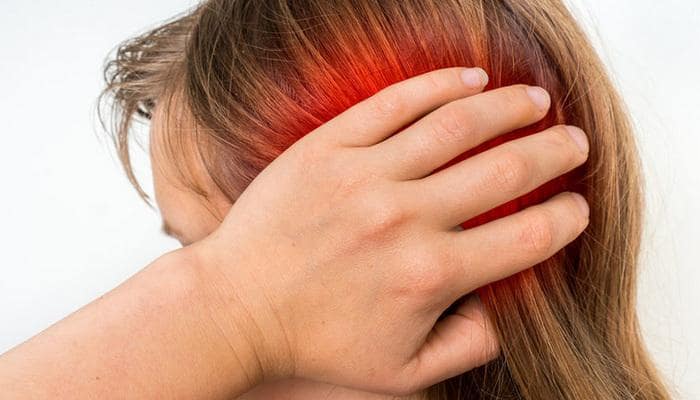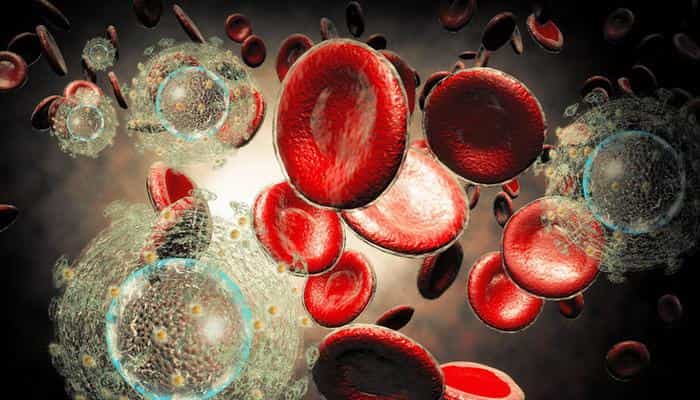Зміст
Loss of immunity as a result of stresses, over fatigue or excessive physical activities – quite widespread problem, which is not surprising. However, a disturbing state is the immunodeficiency which promotes predisposition to the frequent, repeating and heavy infections and infections. Without treatment and not revealed diagnosis, it can lead to development of serious autoimmune diseases, an allergy or cancer. What symptoms can indicate a disease of an immunodeficiency and how to treat them?
What is an immunodeficiency?
The immunodeficiency is the disease state connected with violation of work of the immune system which is intended for protection of an organism against microbes, such as viruses, bacteria, fungi and parasites. At the healthy person, the immune system reacts when he comes into contact with a pathogen, making antibodies and lymphocytes (blood cells) which try to eliminate an infection. Too weak or zero answer of the immune system is connected with an immunodeficiency. They are shown by tendency to long and repeating heavy infections.
Immunodeficiency is subdivided into two types: primary immunodeficiency (PID) caused by genetically determined defects of the immune system and secondary immunodeficiency (WNO) caused by external factors and various diseases.
Primary immunodeficiency are the reasons

Genetically caused immunodeficiency – the rare disease which is found in 1 case from 10,000. Now more than 350 pathological formation of varying severity which in essence consists in violation of work of the immune system belong to primary immunodeficiency. The immunodeficiency usually develops in the early childhood, but very often the disease is diagnosed at later age when the patient is more than 20–30 years old. They are caused by dysfunction of the genes controlling the immune answer of an organism, inherited from parents or caused by the new genetic mutation arising during conception and cell fission.
Primary immunodeficiency are symptoms
As a result of violation of work of the immune system, the people with an immunodeficiency are more subject to various infections and infections. They can be called even by opportunistic microorganisms, that is usual microorganisms which do not cause a disease under normal physiological conditions (for example, yeast and golden staphylococcus). The warning symptoms, such as the frequent and repeating infections, for example can indicate infections of nasal bosoms or an ear primary immunodeficiency (6-8 times a year), pneumonia at least two times a year, the repeating fungal infections, for example, of a mouth or skin, or chronic diarrhea. Often on skin or in bodies there are skin infections, deep abscesses, healing of wounds is broken.
At people with an immunodeficiency two or more serious infections, such as miozit or inflammation of bones, sepsis or a periodontal disease can develop. Serious infections are often heavy and difficult to respond to treatment, despite intensive treatment by antibiotics. Violation of development of the child and slowing down of enrollment of weight can also be a disturbing signal for an immunodeficiency. Primary immunodeficiency is sometimes also connected with autoimmune diseases, which include destruction of cages and fabrics own system of the immune system. Treat such diseases: red wolf cub, sarkoidoz, rheumatoid or idiopathic arthritis and others. The undetected and not cured immunodeficiency can lead to serious complications and even death.
Secondary immunodeficiency are the reasons
In case of secondary immunodeficiency’ reason not genetic, but external factors. NAV are got and meet much more often than primary immunodeficiency. They can appear as a result of various diseases, such as diabetes, uraemia, cancer, crescent cellular anemia, chicken pox, haemo poetic diseases or infections (for example, AIDS, leprosy, malaria). Secondary immunodeficiency can also be the result of malnutrition, violations of absorption, burns, extensive injuries, uses of immunosuppressants or organ transplantation.
Secondary immunodeficiency are symptoms
Symptoms of secondary immunodeficiency are similar to symptoms of primary immunodeficiency. The patient is subject to various types of infections, which are heavy and often repeat. However, they can be temporary and disappear after elimination of the reason. Autoimmunity symptoms at secondary immunodeficiency meet less than at an immunodeficiency. When NPVP is caused by AIDS or acquired immunodeficiency syndrome, the patient is subject to states which are usually not life-threatening. However, they can be deadly to HIV-positive people. The patient with AIDS often has atypical pneumonia, cancer, fungal infections or disorders of the nervous system.
Treatment of an immunodeficiency
Therapy of an immunodeficiency is based on fight against an infection by antibiotics. As patients in whose organism few antibodies of IgG are developed, the replacement therapy in the form of hypodermic or intravenous medicines of immunoglobulin (Ig) is often used. For treatment of an immunodeficiency other methods, such as introduction of factors of growth (increase in quantity of leukocytes), gene therapy or, in hard cases, transplantation of marrow are also used. In case of a secondary immunodeficiency, there can be enough elimination of the main disease which caused its development.
It is also extremely important to prevent infection and to avoid situations when the infection promotes it. You have to care for a condition of the teeth, it is correct to wash hands, to keep to the healthy balanced diet and to be engaged in physical exercises and to sleep enough. Also, it is necessary to avoid contact with bigger group of people and patients, and to do to relatives of the patient vaccination against infectious diseases.








